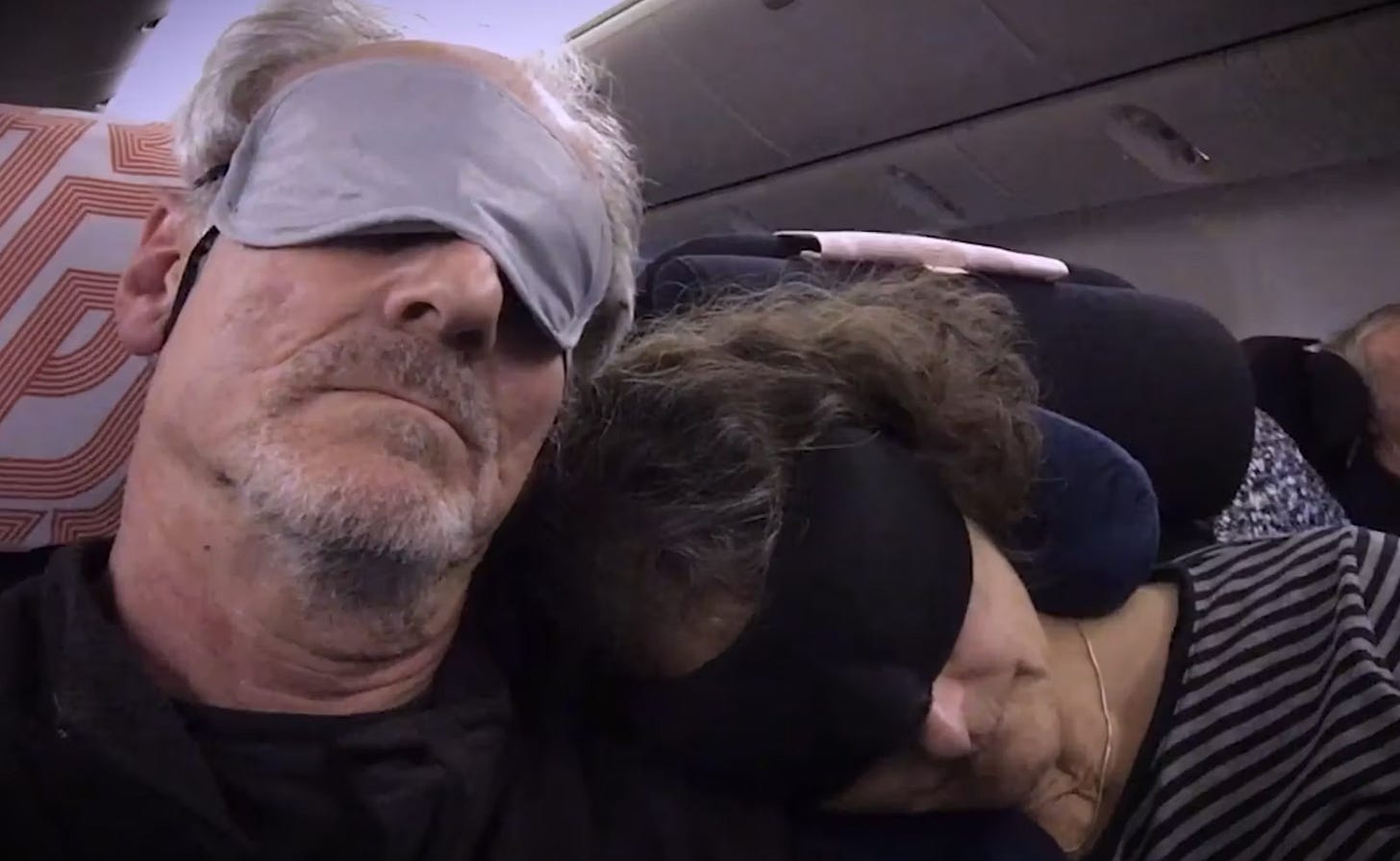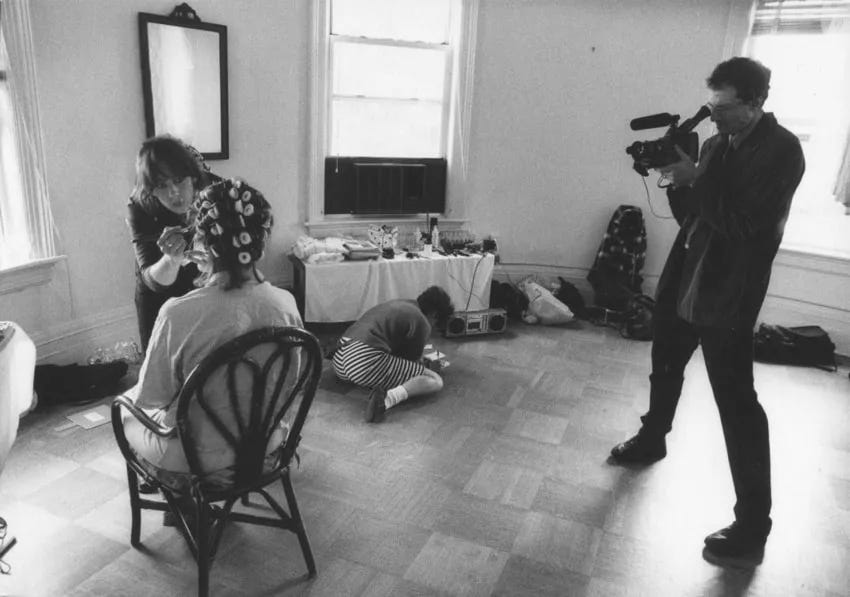The 10 Rules of Personal Documentary Filmmaking (Part Two)
A note of encouragement, but some tough love, too
I hope my first 5 “Rules” went down smoothly last week (thanks for the many kind comments), and that you’re chomping at the bit for more. To those coming to these rules fresh, I drew them up in preparation for a guest lecture to an evening NYU documentary film class back in 2007. I figured simply blathering on about my experiences having made several personal docs would put everyone in a coma, including me. But announcing I had a list of actual rules would wake the sleepyheads up. Mission accomplished.
In looking them over recently for the first time in ages, I saw that, despite a dated reference or two, they’re still totally applicable. I’m aiming my Getting Personal Substack first and foremost to those making or considering making their own personal doc, and what’s the point if I can’t be honest and opinionated. So, hold on to your hats, my friends, here we go with the last five rules.
Rule #6: Don't make yourself out to be better than your other characters
By that I mean don't set out to prove how sensitive you are. Don't be the pillar of wisdom. Don't go on about how much you've learned in the course of your "journey." And by all means don't make yourself seem heroic at the expense of others. For example, should you manage to influence Wal-Mart's ammunition policy for the better (and well done, sir), kindly refrain from grandstanding photo ops with Columbine shooting victims (yuck).
1Clearly, my rules aren’t everyone's rules.
The flip side of this rule is you should be ready and willing to look worse than anyone else in your film, especially when dealing with your family. As mentioned previously, no one comes off well using a camera to get even with their parents. That's not to say there's no place for anger, but not when it's used to air old grievances or get revenge. It's doesn't reflect well on you because you have an unfair power advantage. You're the one doing the editing.
Instead, smart personal filmmakers are often bumbling or self-effacing. Curious, perhaps, but confused. Self-doubting. Uncertain. Vulnerable. And when you are, audiences are far more willing to go along with you for the ride.
[As an aside - and because I just can't restrain myself! - we all know that most first-person docs are about personal journeys. That's why well made ones are so fascinating. But, trust me on this, you don’t want to use the phrase "my journey" in your narration unless we see you in a plane, train or automobile.]
Betty & Henri (& Me) (In production) On route to Paris. “I was restless. Dissatisfied. My marriage in need of a spark. I was searching for something. I just didn’t know what.”
Rule #7: If you're in it, don't overstay your welcome
One of the biggest challenges facing those making first-person documentaries is to figure out your own role in the film. Do you shoot it yourself or hire a camera person? Should you appear on screen or "hide" behind the camera? Will you use narration to help tell the story or not?
While I tend to prefer those docs shot by the person telling the story (and it's how I do my own personal films), it's certainly a valid and time-honored tradition to be an onscreen presence in your own documentary. That said, unless you're unusually charming or witty, you run a huge risk of irritating the hell out of the audience if you put your mug up there too much. The trick is to find just the right balance between making your presence felt without making it seem self-indulgent.
How do you achieve that balance? For starters,2hire the best editor you can possibly afford and give her room to truly collaborate (or a great consulting editor if you can’t pay a full-time editor). Together, find a solid justification for each time you appear on screen and pick your spots carefully. Be ruthless. And once you have a cut that’s far enough along, hold a small screening or two to solicit honest feedback (6 to 10 peeps are my sweet spot, and not just friends).
Being in your own personal doc is a tricky thing. But solving it often boils down to one simple concept. Less is more.
Rule #8: If you're shooting it, learn how to shoot
In this digital age, it’s no surprise that aspiring filmmakers with no camera experience whatsoever are shooting their own personal docs. Hiring a DP is expensive and high-quality 4K cameras are stunningly affordable. Now anyone with access to a great story can capture it themselves, and the temptation is irresistible.
However, as someone who appreciates first-person documentaries, I'm begging you - every camera comes with something called a manual. Read it. Learn it. And then practice. Practice holding the camera steady. Practice using the manual exposure. Practice moving with the camera smoothly.
112 WEDDINGS (2014)
And keep in mind the core vocabulary of your chosen medium. Cinematography isn't just about medium shots. The well-chosen close-up is hugely powerful. Establishing shots create context. Cutaways will save your life in the editing room. Each has its own meaning and adds to the impact of your story.
Did I mention practice?
Maybe it's because I've been a professional cameraman for over 325 years, but I’ve noticed some really amateurish looking video that's made its way to the big screen lately. And it kills me when it ruins films that otherwise could have been great.
Rule #9: You're not really you, you're a character in a story
When it comes to making personal docs, you can run but you can't hide. Whether you choose to be onscreen or not, narrate or not, there's no escaping the fact that you are in it. This is a high-risk endeavor and not for the faint of heart. In fact, the success of your film is often directly proportional to your willingness to put your neck squarely on the chopping block.
But if you follow this rule you can breathe a little easier because first-person documentaries are no different from other movies in terms of audience expectations. Some moviegoers seek out films that bust genre conventions or play with the form, but most just want to lose themselves in a good story.
So, unless you're a pure experimental filmmaker, or perhaps making a short, your task as a director is to stand at a remove, let go of your ego and work through your arc as the story's protagonist or driving force. The arc may be small or subtle, but it's always there. Your character begins at point A, and whether you end up at point D, G or P there's inevitably a movement towards self-discovery and growth through the course of the film.
It may seem impossibly daunting to maintain that kind of distance and objectivity. But I think it's actually liberating. If your focus is on character growth, you'll feel far more free to show yourself behaving badly at times, which for story purposes can be a good thing. And hopefully be far less inclined to wallow in self-indulgence.
Rule #10: Trust your story
In looking back over my first 9 rules, I realize I sometimes sound as critical and cranky about personal docs as some of their fiercest critics, and I don't mean to be. I prefer to think of it as tough love, or being hardest on those you love most.
I honestly feel personal documentaries are the realm where the most exciting, innovative and powerful work in all of cinema is happening these days. And if I've focused more on the potential pitfalls of turning the lens of a camera around on your life, it's only because I want to be blown away when I see your film on the big screen.
On that front, I hope this last rule will leave you with a wee bit of encouragement.
Trust that your story is unique, even though you might fret it's just about your boring old family.
Trust that your story is universal, so long as you tell it as specifically as you can.
Trust that your story is compelling, and approach it with a rigorous eye for its inherent drama.
Trust in your story’s worth, and stop worrying so much about how you're coming across, or whether you'll be rewarded or crucified by critics.
For all I've written about how audiences come to first-person docs with a built-in resistance, it's not like they can't be quickly won over. When the lights go out, everyone is hoping for a story they can get deeply absorbed in and make a profound connection with. So trust your story, and knock us all out with that personal documentary of yours.
And, finally, do I even need to say it? Rules were made to be broken!
Photography may be more hobby than profession for me, but I love it and take it seriously. I’m aiming to put up a favorite image of mine at the bottom of every Substack post I do because, well, I can. And because I believe in happy endings.
For the record, I have the highest respect and admiration for Michael Moore. And for those grappling with how to introduce yourself as a character in your personal doc, the opening ten minutes of Roger & Me is an absolute masterclass.
I’ll have much more to say about how I go about selecting and working with my editors in a future post.
Update: 44 years, yikes!







Doug, thank you for generously sharing Your 10 Rules resonate deeply—especially the reminder to embrace vulnerability and not overstay our welcome in our own films. As a documentary filmmaker from Peru working on a very personal project about death, your words offer both encouragement and necessary perspective. I’d love the opportunity to connect one day and learn more from your experience. Your work continues to inspire.
Now that I have read Part 2, Rules 6-10 I really think most of these rules can apply to first-person writing as well. I am saving them!!!! Thank you!!